Upper Suriname River: How to Solo Travel to the Maroon Villages of the Suriname Interior
The sounds of the lush Surinamese rainforest buzz and hum with the echoes of the creatures that live within. In the depths of this South American country, the indigenous Marron villagers easily navigate the Upper Suriname River rapids, just barely bumping into the large boulders as the speed boats fight to go upstream. With 90% of the country covered in virgin Amazon foliage, a visit to Suriname’s interior is an opportunity to look at our planet just as humanity’s famous explorers did centuries ago.
Suriname is the smallest country in South America and one of the least visited in the world. With 280,000 annual visitors in 2017, Suriname is the 152 least visited country in terms of international tourism.
Why Travel the Upper Suriname River to the Interior?
The capital, Paramaribo, is the tourist hub and is home to the majority of things to do in Suriname. But, to experience the country’s authentic culture, travel inland to the interior of Suriname to interact with the indigenous people of Maroon villages living in the wild Amazon jungles.
These tribal communities are descendants of runaway African slaves during Suriname’s colonial past. In relative isolation from western influence, the small population of maroon communities has their own language, traditions, economic activities, and way of life.
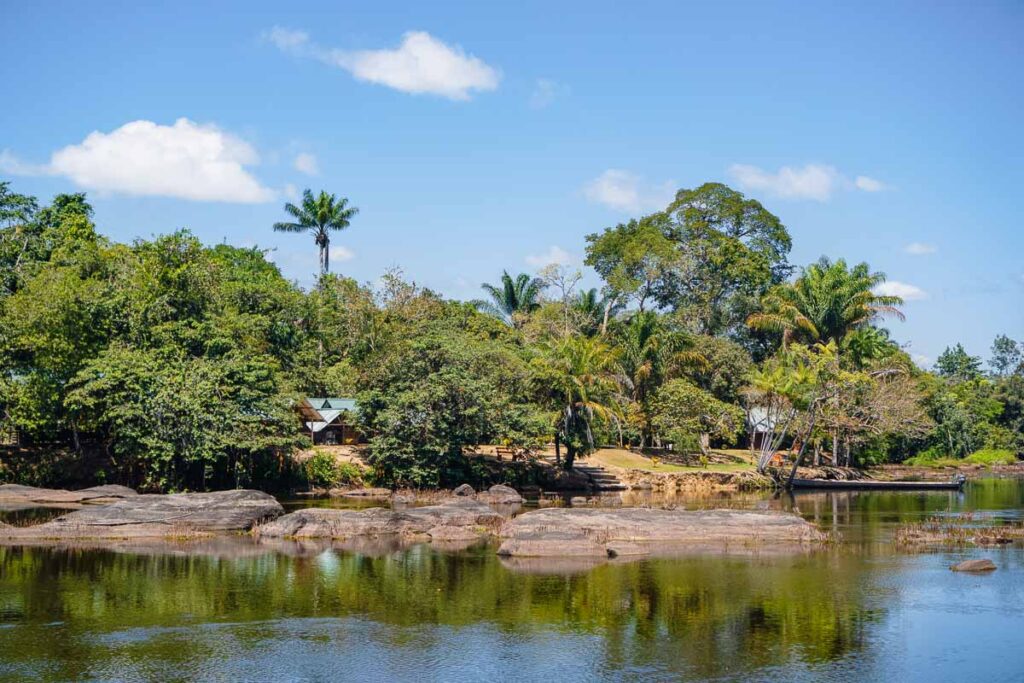
Road Infrustructure in Suriname
Upon leaving Paramaribo’s city boundaries, towns and villages quickly become sparse and far between. Half of Suriname’s population lives in the capital, and all roads lead to Paramaribo, all two of them.
A T-shaped road infrastructure allows access along the Suriname coast from Guyana to French Guiana. The other leads inward to the Suriname Interior, following along the banks of the Upper Suriname River.
That road ends in Atjoni in central Suriname, only 115 miles (184km) inland. From there, the undisturbed wilderness is only accessible by boat.
General Route To Get to the Suriname Interior
- Get in contact with a Suriname eco-resort, so they know to expect you
- Transport to Atjoni: The end of the road
- Take a taxi boat to your eco-resort
- Take boats to local attractions and visit Maroon Villages
1. Book a Suriname Eco-Resort
Without a tour package, finding an eco-resort might be the most challenging part of planning your journey into the interior of the country.
Information on Suriname resorts along the river is not as easy as doing a quick google search. These river resorts often don’t have a great online presence, their contact numbers are outdated, or no one picks up the phone. Many times prices differ from what is stated online, and packages lack essential details.
Tip: Do not just show up at a resort. If they are full or not prepared for your arrival, there may not be enough food for your stay. Traveling to an alternative will take time as you will need to hire a boat to take you.
Check the location of the resort you select. The closer your resort is to Atjoni, the more easily it is accessible. The further into the interior you go, the boat ride can last hours and be much more secluded. If you plan to go to the best sights along the Suriname River, consider that the closer you stay to Atjoni, the further the ride to get to any attractions.
If you have the time, try to get as far into the interior as possible to have the most authentic experience. The further you enter, the more untamed your surroundings are, and the more traditional the villages are.
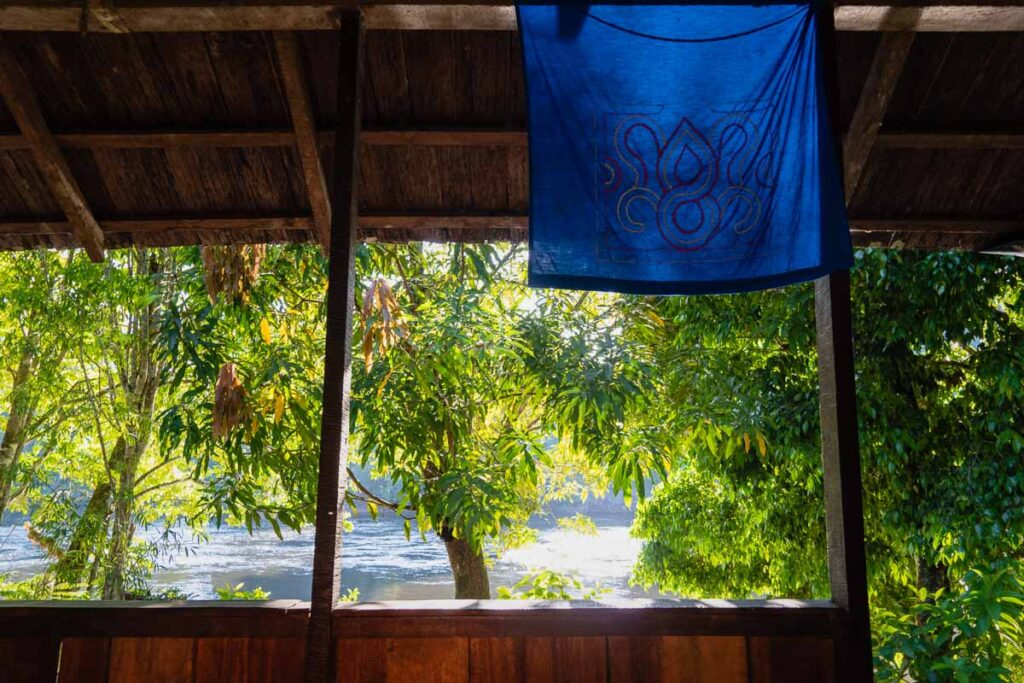
Picking a Suriname Resort in the Interior
Here are a few resorts that we were able to find info for or, as we drove by, got the contacts of. Resorts offer differing comfort levels, ranging from primitive to semi-primitive to comfortable and luxurious. The price, for the most part, reflects the amenities provided.
Of the 10+ numbers that we attempted to reach, price feedback ranged from $40 to $215 USD a night. Sometimes resorts charge per person, so ask if it is per room or per person.
Higher-end resorts can include a pool, electricity, wifi, and central air. More basic options will provide a lodge with a fan, but not much else. Most resorts will supply meals, and some may allow you to pay less to forgo food. Wifi gets sparse the further up the Suriname River you travel.
Many resorts offer tour packages that include transportation and daily tours. Of course, you will save the hassle of transporting yourself to the inner parts of Suriname, but the eco-resorts charge a premium on transportation. And, who doesn’t like to smell the jungle roses along the way?
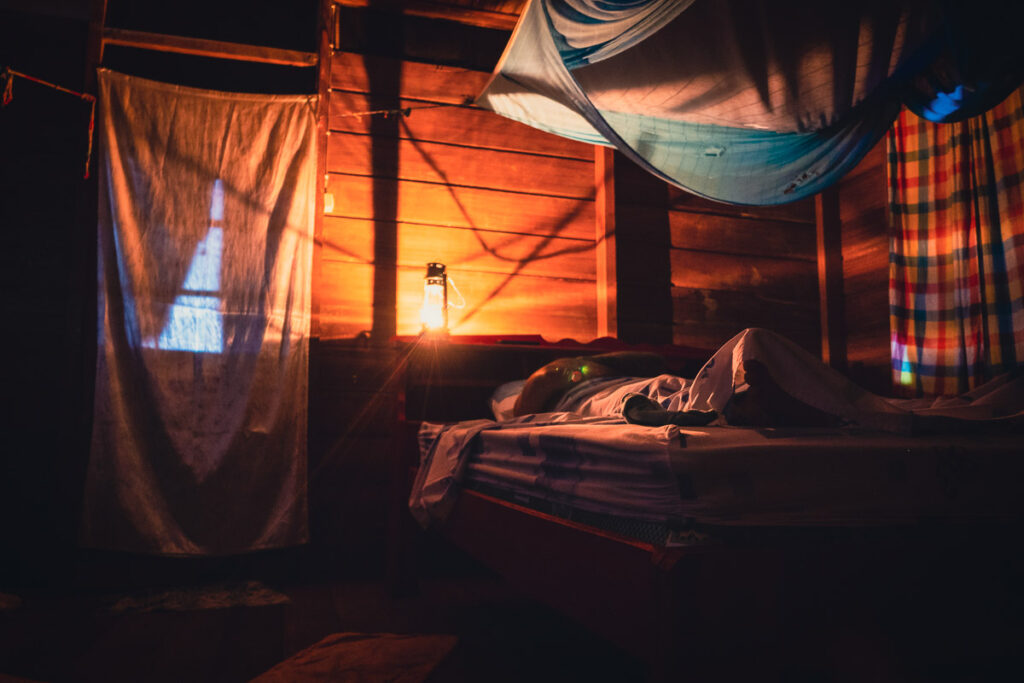
List of Upper Suriname River Resorts
- PingPe Jungle Resort (We stayed here)
- Phone: +597-885-8525
- Website: https://www.jungleresortpingpe.com/
- Comfort Level: Primitive
- Boat Ride Duration: 2-3 hours
- Price: 900 Surinamese Dollar, $40 USD per night, and we joined a day tour for $20/person
More Expensive Suriname Resort Options
- Knini Paati Jungle and Eco-Resort
- Website: https://www.knini-paati.com/
- Price: $160 USD per person/night (min 2 people)
- Anaula Nature Resort
- Website: https://www.anaulanatureresort.com/
- Danpaati River Lodge
- Website: https://danpaati.com/
- Price: $350 USD per person for 3 days all-inclusive
Other Suriname Resort Options
- Menimi Eco Resort
- Website: http://menimi.net/
- Price: $140 USD per person for 3 nights (Additional for tour)
- Botopasi Resort
- Book here
- Price: $125 – $250 USD per night
- Kosindo River Lodge
- Website: http://surinamelodge.sr/nl_NL/
- Tang Luku Resort
- Gunsi Resort Tei Wei
- Phone: +597-882-8998
- Tio Boto
- Website: http://www.tioboto.com/
- Phone: +597-888-1727 or +597-896-9279
- Royal Masia Resort
- Phone: +597-890-0286
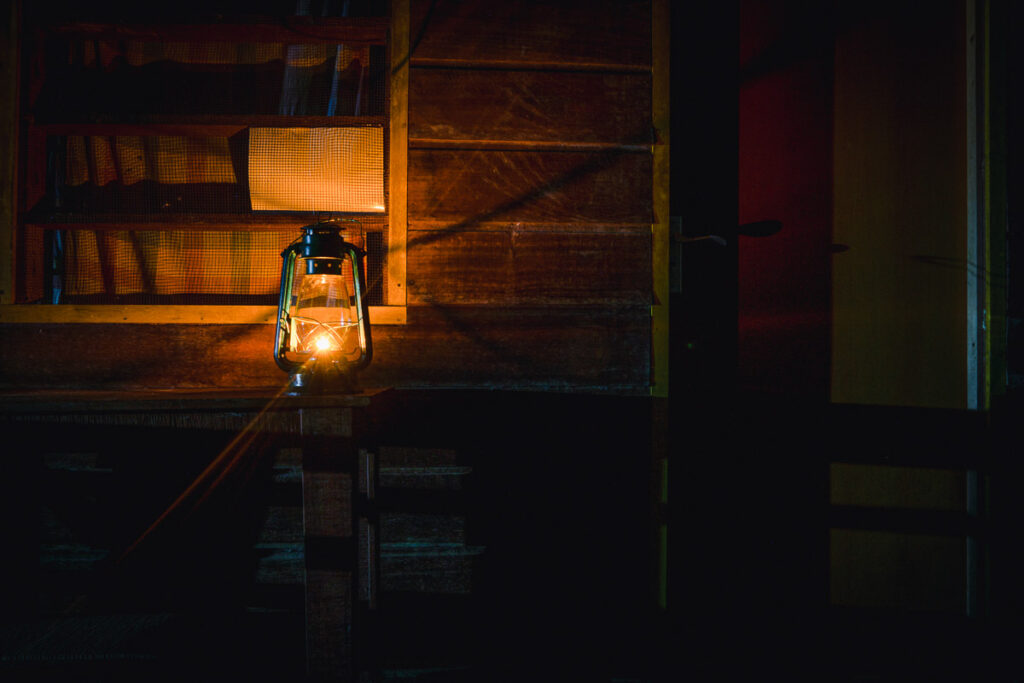
2. Transport to Atjoni: How to Get to the Suriname Interior
There are a few methods of travel to get to Atjoni, Suriname:
- Rent a Car
- Shared Taxi
- Public Bus
- Tour Package Arrangement
Renting a Car from Paramaribo, Suriname
Personally, we rented a car. Many world-renowned car rental companies operate in Suriname but with limited availability in stock.
You can rent from the airport, but if you are already in town, the airport is 60km away. Collecting a rental car from the airport adds a $38 airport pickup fee.
Google does not have the most up-to-date hours of operation for the few rental companies in Paramaribo. The best method is to check in person, then price compare online.
rental companies in Paramaribo
- Alamo, Enterprise, National (all in one store) –
- Address: Anton Drachtenweg 49, Paramaribo, Suriname
- Phone: +597-882-2752
- Hours: 8am – 4:30pm
- Car Options: $35 Honda City ($39 with insurance) bartered down from 45$. 75$ for Volkswagen Amarok. I was lucky and was able to find the Honda City for $25/day online.
- Avis:
- Address: Anton Drachtenweg 50-54 (In the parking lot of the Marriott Hotel), NOTE LOCATION CLOSED as on 10/19/2021
- Phone: +597-457-159, or +597-881-0618
- Compa International – The store looks big and has low rental prices, but you are only allowed to rent cars within the city of Paramaribo, which seems pretty pointless. They will not rent to you if they know you are planning on leaving the city.
If you opt to rent a car, it takes around 3-4hrs to get to Atjoni, the end of the road.
Shared Taxi
A shared taxi means finding a private car to bring you to Atjoni. Your guesthouse will be able to call a contact or find a taxi driver willing to take you. If you find others to fill an entire car, it would cost between 20-30 euros per person. Expect to pay more if you cannot fill the car.
Public Transportation in Suriname
We never had the opportunity to take buses in Suriname, but the bus park is downtown on Waterside St and Heiligenweg St. On the weekend, the bus did not frequently run to Atjoni, only once very early in the morning and once in the afternoon. The morning bus departs between 6-8am and the afternoon at 1pm.
Tour Package Arrangement
Many of the resorts offer all-inclusive packages that provide transportation ranging from collective buses to airplanes. They usually charge a high premium for the ease of travel.
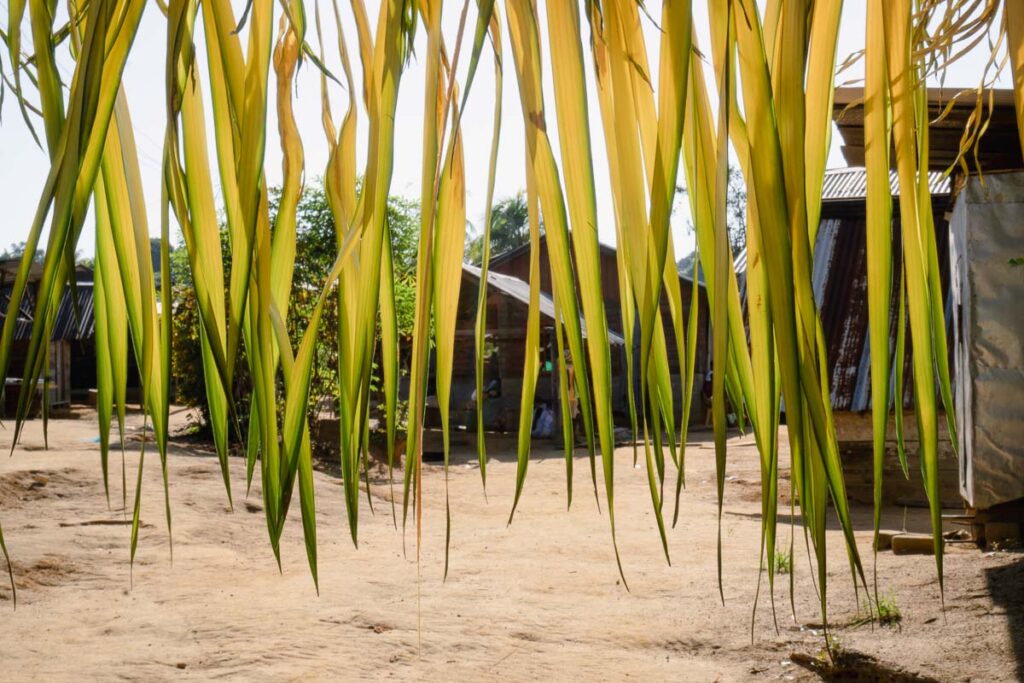
3. Take a Taxi Boat to a Suriname Resort
Atjoni is the boat taxi hub to enter into the depths of the Suriname interior. Atjoni marks the end of the road infrastructure, so you will have to take a taxi boat from there.
Upon arriving, walk or park your car along the riverbank. Hear the hustle of locals herding supplies, readying vessels, and shouting to lure travelers onto their boats. The arrival of the motorized canoe came only in recent decades and has provided much easier access into Suriname’s interior for tourism and critical economic supply chains for villagers.
Departure Time
If you do not have a prearranged boat waiting for you, make sure to arrive by Atjoni before 1:30pm, but to be safe 1:00pm. The final taxi boats will leave for the long trip inland within the hour.
Cost
The cost will change depending on how far your resort is.
Monday to Friday, there are government-subsidized boats. For one way to PingPe per person, it costs 200SRD (9.50USD). There are less and only independent boats on the weekends, which would charge 250-300SRD (11.5 – 14$USD).
Boat Quality
It is extremely hot or rainy in Suriname, and the motorized canoes that operate have open tops. Goods and luggage heavily weigh down the vessel.
At take-off, only an inch remained between the boat rim and sinking. If you have any precious electronics, put them in a dry back or wrap your luggage with a rain cover.
Duration of Boat Ride
The water taxi stopped at many villages, and I have noted the time duration of arrival below (going upstream). Note that these times will be approximate as less weight will reduce time, and taking a smaller boat will be slower due to a smaller engine.
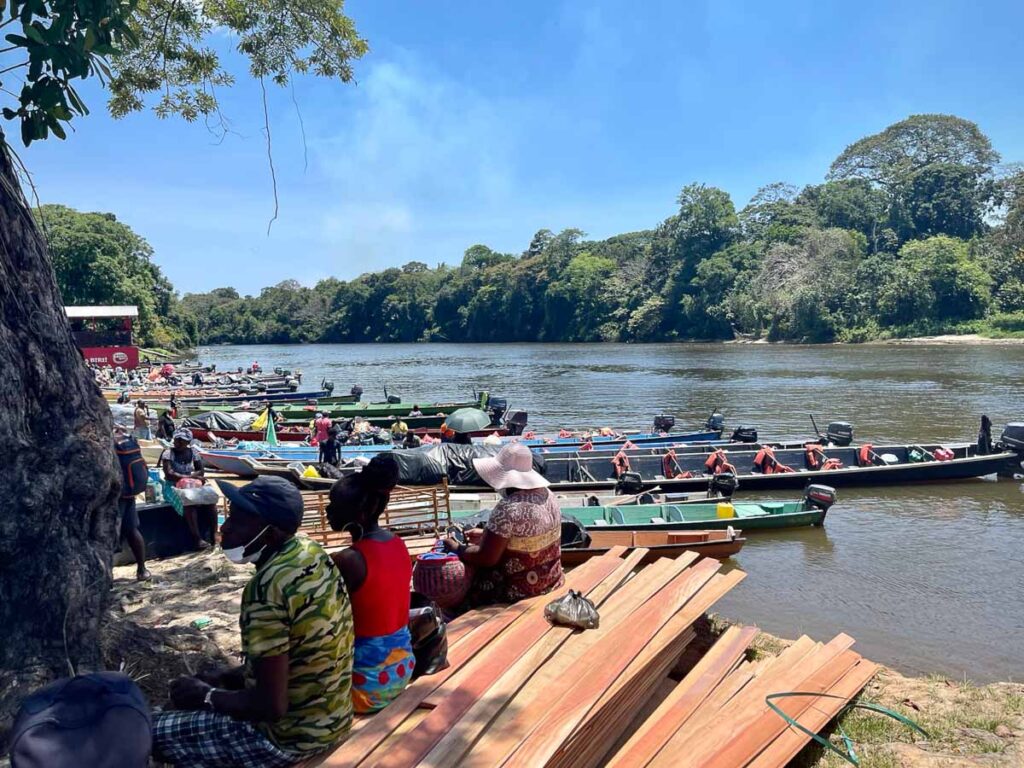
4. Things to do in the Upper Suriname River
Most resorts offer tour packages. Below lists some of the best things to do in the Upper Suriname River.
Bathe in the Upper Suriname River and Play Amongst the Rocks
The Suriname River is the life of any village here. All along the banks, children swim and jump off rocks, men and boys fish, and women and children launder and clean the dishes.
Uniquely smooth rocks form rapids to dive in and relax on. You can swim almost anywhere in the Suriname River, but wear shoes in the sandy areas to avoid small stingrays.
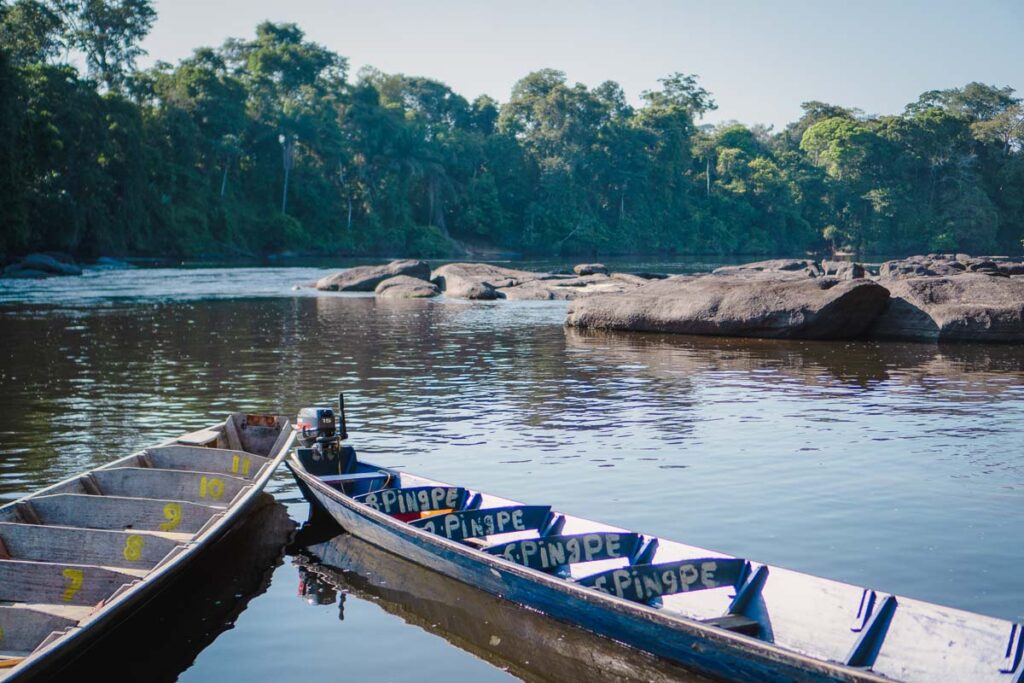
Visit your local Marron village
You’re likely to hear chanting, singing, the bass rhythm of drums, and the sounds of gunshots (Don’t worry, they’re blanks) coming from the local Marron village near you. The self-sufficient communities all rely on natural resources to build their homes, feed themselves, and live the way they do.
You’ll notice that resorts all reside near a local village but not directly in its vicinity. Due to traditions rejecting western influence, resorts are built close to or across the riverbank.
It might take a short boat ride to get to the closest town, but it is well worth visiting. Go to more than one. The smaller villages can look very different from the bigger ones.
See a Village Ritual or Tradition
At least fifty people gathered to dance and honor the life of a village elder. The owner of PingPe Jungle Resort invited us to his maroon village for the last day of his father’s funeral: a cleansing ritual.
The son of the deceased had called this event a celebration. They danced and played music the previous night and continued a different ceremony for the morning. Interestingly, they celebrate funerals 6 weeks to 3 months after the deceased passes away.
If you ask around, I’m sure you would be able to find some traditional activities happening in one of the towns, funerals or otherwise. Everyone has family everywhere and is very accepting, even pulling me into the dance circle and dressing me to fit in more.

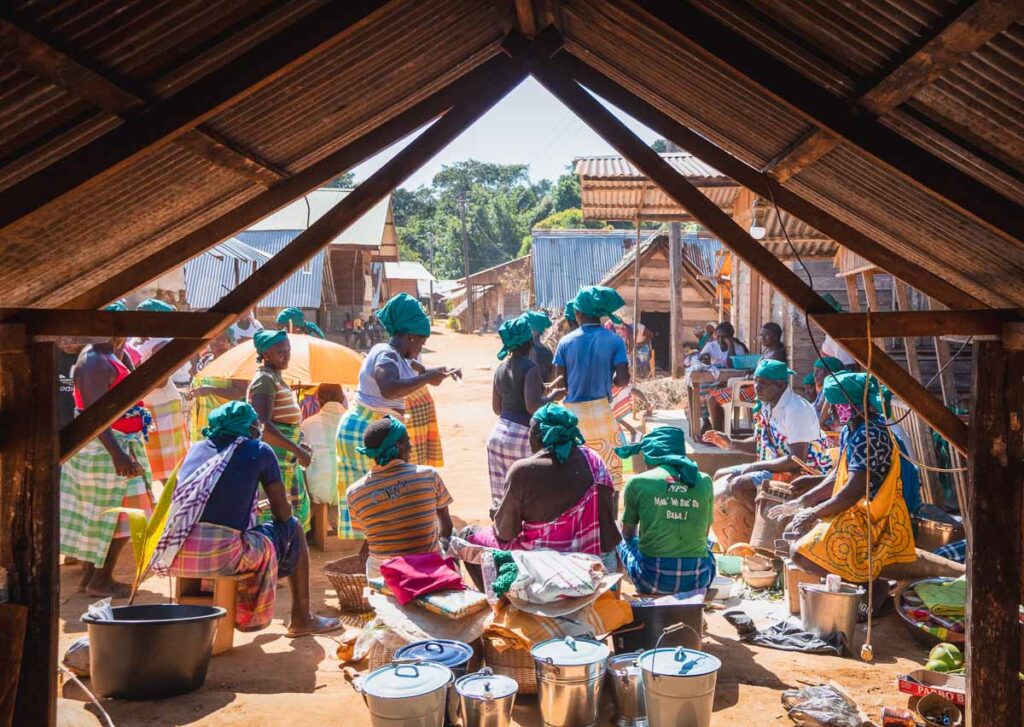
Pineapple Hill (Ananas Hil in BenzeKonde)
Getting to Pineapple Hill may take some effort. Perfect for PingPe resort, Pineapple Hill is situated deep in the upper Suriname River, taking 45 minutes upstream from the village of PenPen.
Hiking this hill is most commonly paired with a trip to the nearby Tapawatra Waterfall, which should be on your Suriname bucket list.
Walk through the village of BenzeKonde, learning about the culture of this ethnic group before hiking an hour, passing through diverse plant species of the pristine tropical rainforest. Relatively easy and flat, only the last section requires climbing up a large steep rock with zero shade in the blistering hot sun.
Did you know that a pineapple plant will grow if you just throw the spiky head on the ground? Well, I didn’t either until coming here. Although better during the spring rain for pineapple season, we ate a few tasty baby and teenage pineapples.
Toss the head after to help preserve Pineapple Hill.
Tip: It sucks that it is so hot, but you may want to cover up for certain parts of this hike. Beware of these horribly painful biting horseflies and a four-leaf plant that grows near the pineapple plants that are razor sharp.
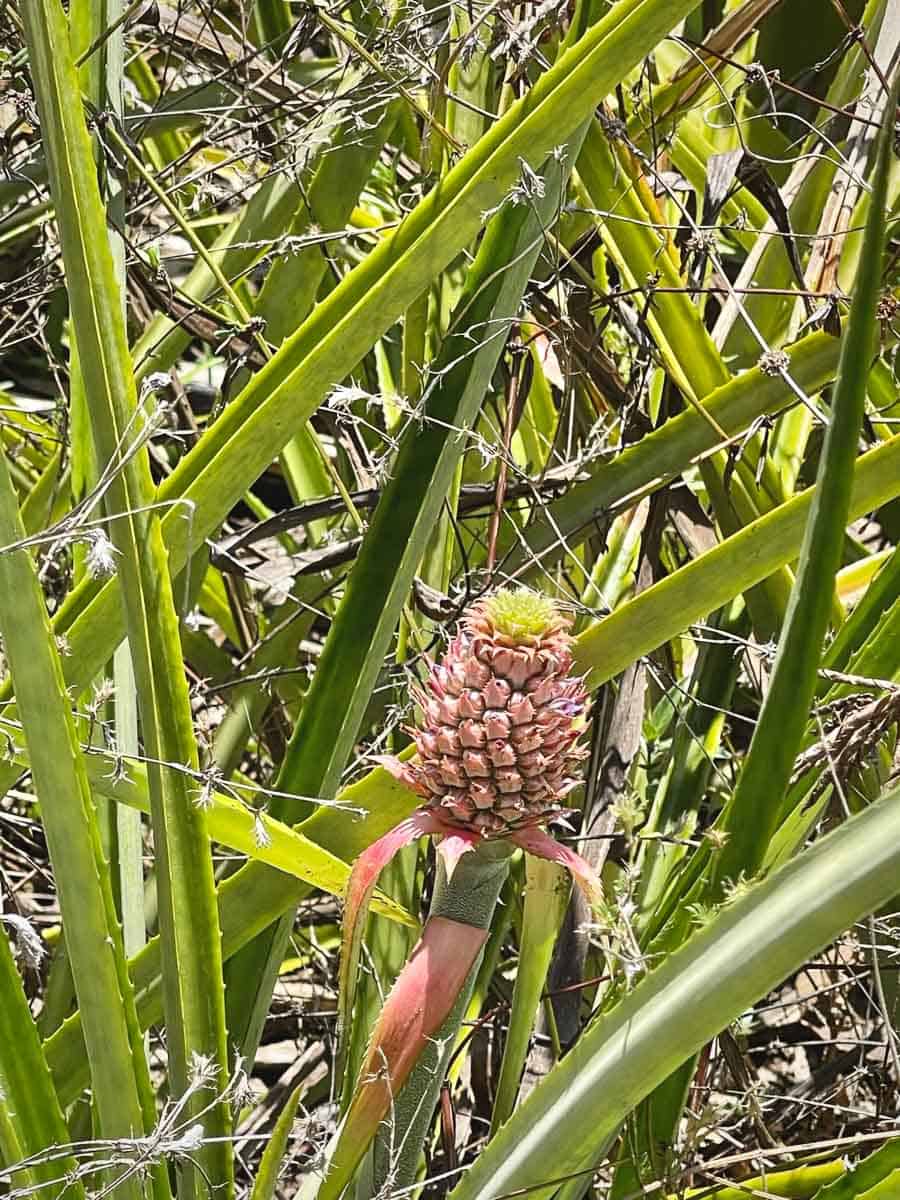

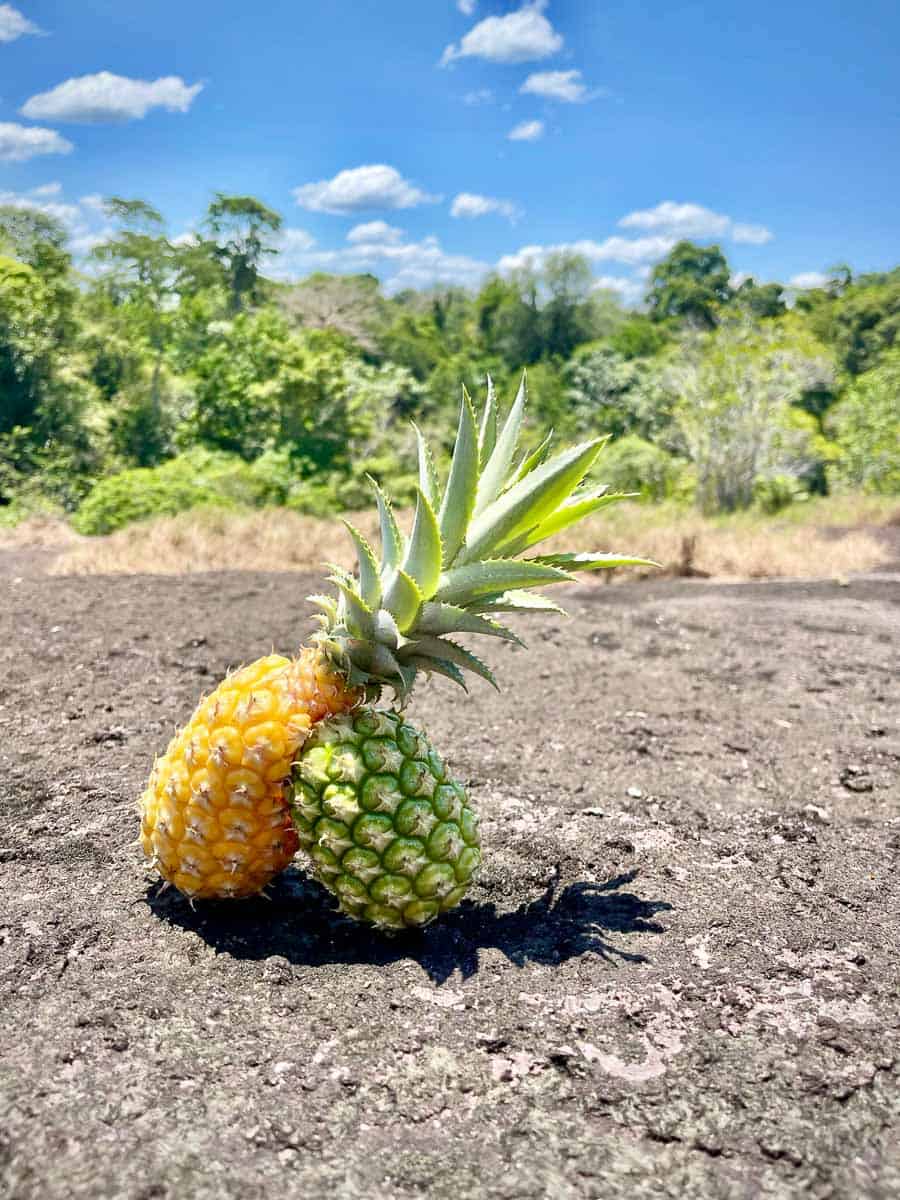
Tapawatra Waterfall
It doesn’t look like much from afar, but Tapawatra Waterall is rather unique from up close. Covered in green river weeds, purple flowers, and giant leaves, play in the pools and rapids of these beautiful falls. Lay in a bed of greenery and let the water run past you or slide down the cascading tiers.
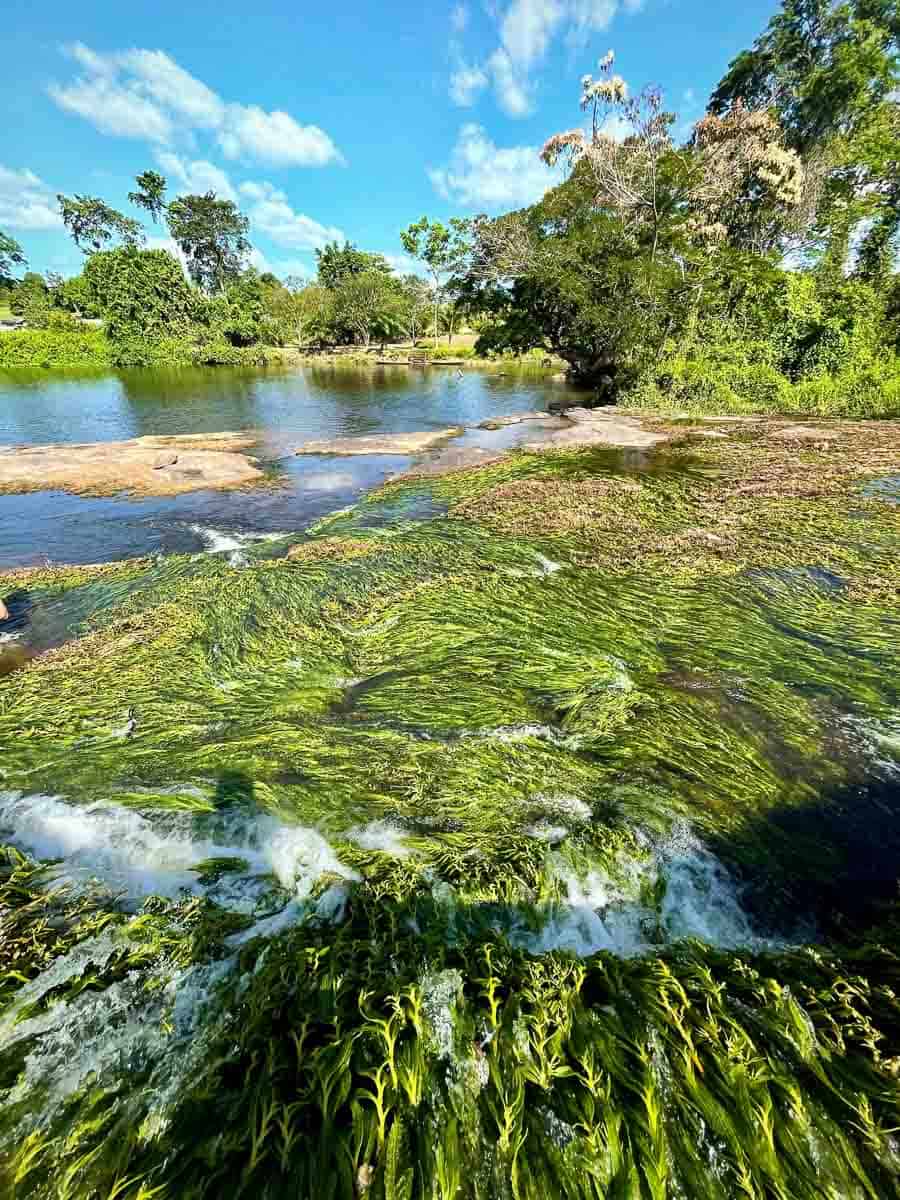
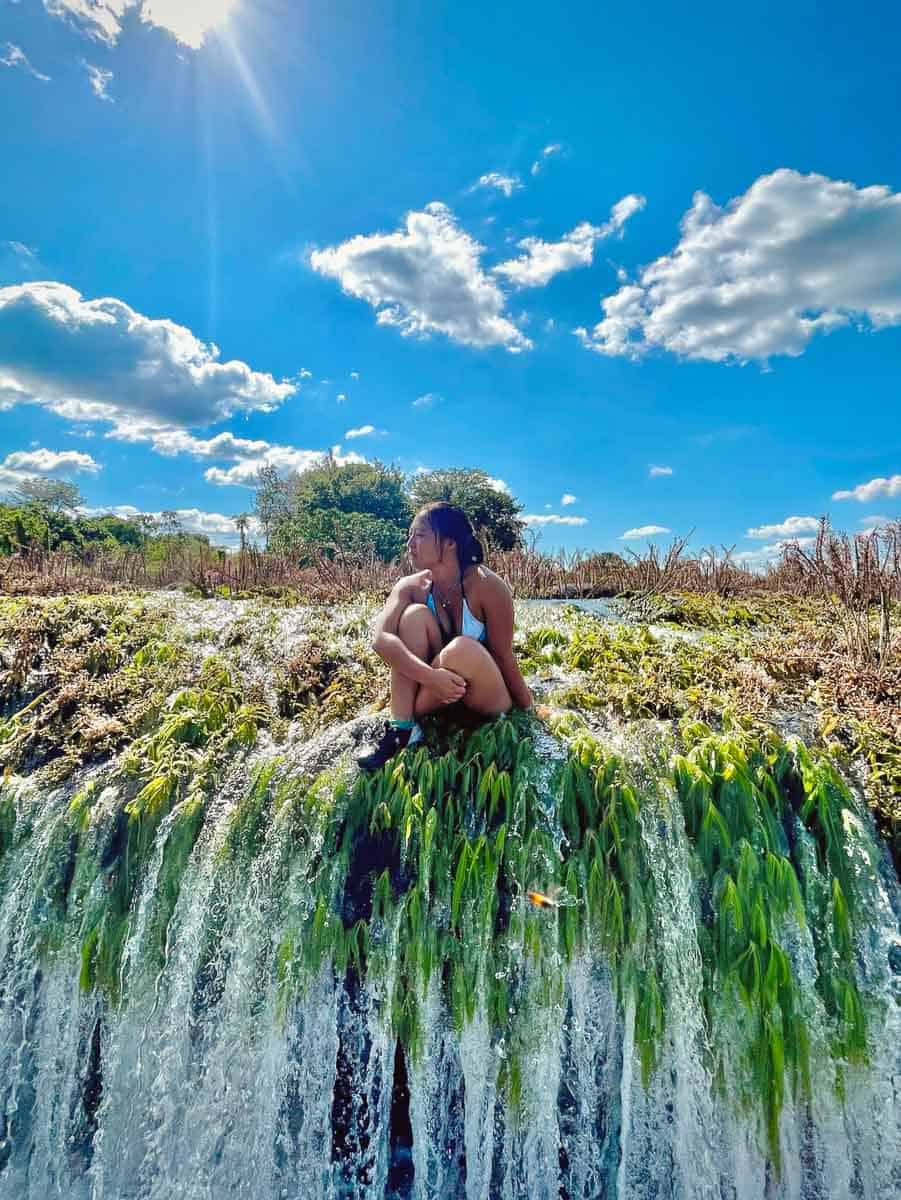

Our Day Tour Agenda
We didn’t know this at the time, but PingPe River Lodge is one of the closest resorts to the main attraction of the area: Tapawatra Waterfall. Whichever resort you select will affect tour duration and cost. At PingPe, our day trip cost ~$20 per person, lasting 6-7 hrs.
Tour Schedule
- 10:15 left PingPe River Lodge
- 11:00 started the hike by walking through BenzeKonde
- ~12:45 Top of Pineapple Hill to look for fruit to snack
- 1:35 Headed back to town
- 2:25 Arrived back to town
- 3:00 Tapawatra Waterfall
- 4:30 Departed from waterfall to arrive at 5pm
How to Get Back to Paramaribo, Suriname
Water Taxi Back to Atjoni, Suriname
Shared boats all leave very early in the morning. At PingPe, speedboat motors start zipping across the river as early as 6am to around 7am.
The closer you are to Atjoni, the later they will pass by to pick you up. Boats all leave early in the morning to make the ride back at 1pm before the sun sets.
Private Boat to Atjoni, Suriname
If you would like to extend your stay later into the morning, you can also arrange a private boat. A private boat in either direction will cost more but be on your schedule. The smaller engine increases the duration of your ride, so it may not be worth the effort and cost.
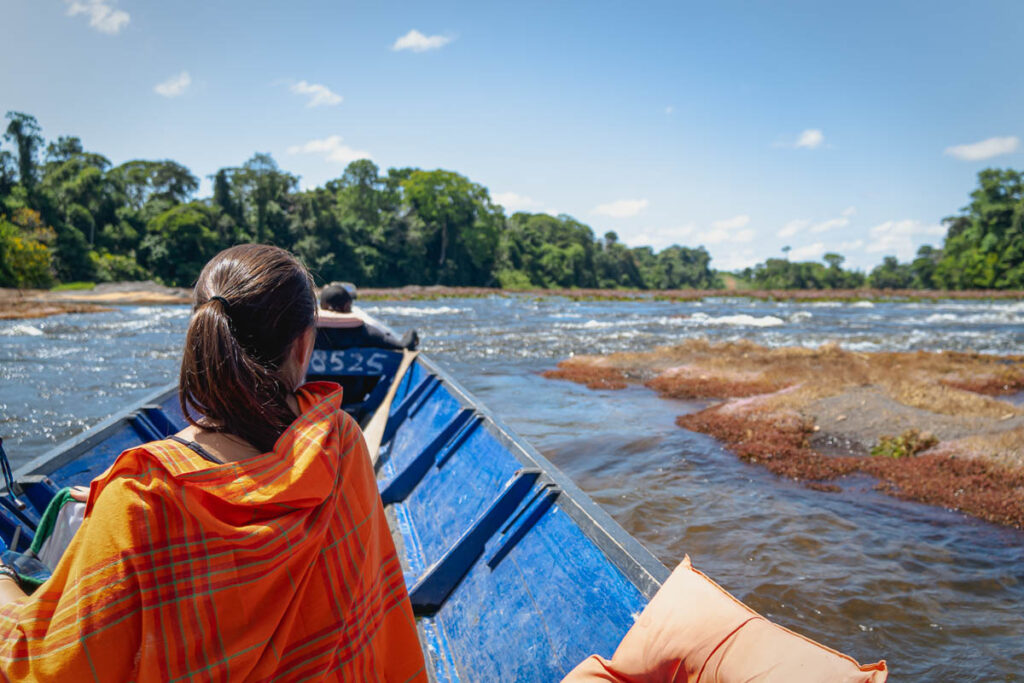
Tips about The Upper Suriname River Interior
Maroon Locals are very Traditional
Local villagers are very friendly but are culturally traditional. Before you start snapping too many portrait photos, I would make sure that they are alright with it.
Related Post: Learn more interesting facts about the Marroon villages of Suriname
Maroon Village Language
Although the official language is Dutch, most Surinamese people of indigenous communities largely speak their own language: Saramaccan.
Electricity
Only in recent decades did an electrification project and generators get introduced to many of the maroon communities. In many places, electricity is spotty at best. Our resort had an outage the whole time we were there.
Snacks
Most resorts provide food. From our experience, the meals provided may not be to your taste and are largely focused on steamed, natural starches. Tasty but very mono-flavored. We had a vegetarian among us, which meant he basically ate potato and banana-like foods the whole time. Bring snacks if you would like more variety.
Boats can Flip Over on the Suriname River
As well as the locals can navigate the rivers, accidents do happen. We witnessed a boat flip, and everyone who passed by attempted to help collect their lost items and get them on their way again.
Even if you are not directly in the accident, it may delay your trip if your boat passes by as they will stop to help out.

Bucket List Worthy: Upper Suriname River to Visit Maroon Villages
100% traveling the Upper Suriname River to the interior to visit the Maroon villages was the quintessential highlight of our trip. All the hassle of planning this weekend trip, was made worth it with the knowledge gained of the Maroon people and seeing the beauty of the untouched Suriname River.
Catherine Xu is the founder and author of Nomadicated, an adventure travel blog that helps travelers cross off their bucket list. Since discovering traveling in 2015, she has lived and journeyed to 65 countries across 5 continents and vanlifed the west coast USA for 2+ years. These days, she splits her time in Southeast Asia and California while sharing her travel stories and resources based on first-hand experiences. Catherine's other works has been referenced in major publications like MSN, Self, and TripSavvy.
